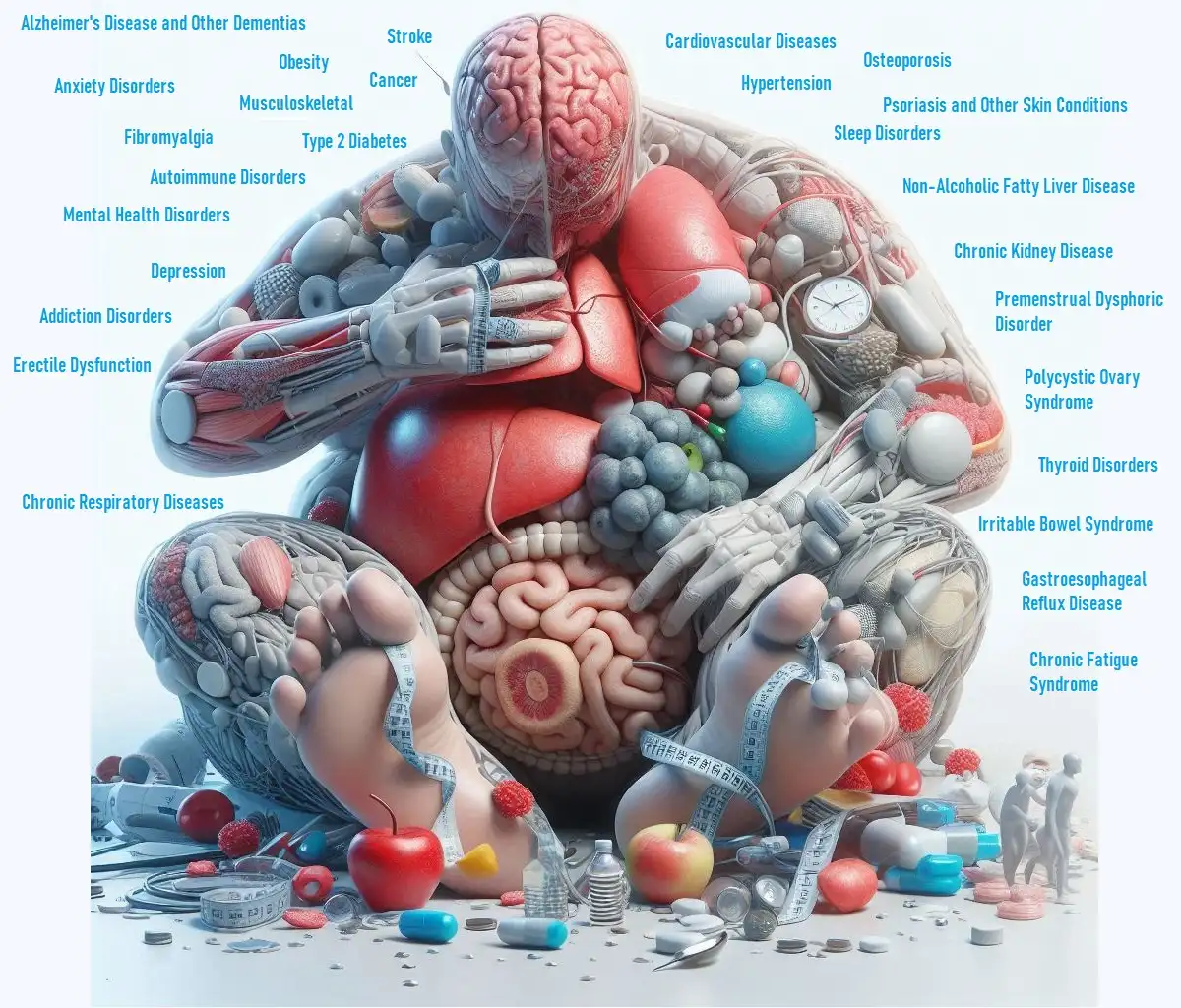
Maintaining musculoskeletal health is crucial for overall well-being, especially in today’s world where lifestyle factors play a significant role. Whether it’s managing back pain, preventing carpal tunnel syndrome, or understanding the impact of sedentary habits, the choices you make can greatly affect your body’s ability to stay healthy and pain-free. In this guide, we’ll explore how different aspects of your lifestyle influence musculoskeletal health and offer practical tips to help you manage and prevent common issues.
Key Takeaways
- Obesity can significantly increase your risk of back pain.
- Proper ergonomics are crucial in preventing carpal tunnel syndrome.
- Sedentary lifestyles contribute to musculoskeletal pain.
- Vitamin D plays a vital role in maintaining bone health.
- Physical therapy is an effective tool for managing musculoskeletal disorders.
Impact of Obesity on Back Pain
How Excess Weight Affects Your Back
Obesity isn’t just a cosmetic concern—it’s a serious health issue that can lead to various musculoskeletal problems, particularly back pain.
- Increased Pressure: Extra weight puts additional pressure on your spine and lower back, leading to pain and discomfort. This pressure can strain your muscles and ligaments, contributing to chronic back pain.
- Altered Posture: Carrying excess weight often changes your posture, leading to an imbalance that can cause further strain on your back. Poor posture can exacerbate existing back pain or even cause new issues.
- Inflammation: Obesity can lead to inflammation in the body, which may contribute to back pain and other musculoskeletal problems.
Managing Back Pain Associated with Obesity
- Weight Loss: Achieving and maintaining a healthy weight can significantly reduce back pain. Incorporate a balanced diet and regular exercise into your routine to support weight loss.
- Strengthening Exercises: Strengthening your core muscles can help support your back and reduce pain. Focus on exercises that target the abdominal and lower back muscles.
- Posture Correction: Pay attention to your posture throughout the day. Use ergonomic furniture and practice good posture habits to alleviate strain on your back.
Role of Ergonomics in Preventing Carpal Tunnel Syndrome
Understanding Carpal Tunnel Syndrome
Carpal Tunnel Syndrome (CTS) is a common condition caused by pressure on the median nerve in the wrist, often resulting from repetitive hand movements or poor ergonomics.
- Repetitive Strain: Activities that involve repetitive hand movements, such as typing or using a mouse, can put stress on the median nerve and lead to CTS.
- Poor Wrist Position: Incorrect wrist positioning while typing or using hand tools can contribute to nerve compression and increase the risk of CTS.
Preventing Carpal Tunnel Syndrome with Ergonomics
- Proper Desk Setup: Ensure your workstation is ergonomically designed. Your keyboard should be at a height that allows your elbows to remain close to your body with your wrists in a neutral position.
- Wrist Supports: Use wrist supports or ergonomic keyboards and mice to maintain a natural wrist position and reduce strain.
- Breaks and Stretching: Take regular breaks to stretch your hands and wrists. Simple exercises can help relieve tension and prevent CTS.
Musculoskeletal Pain in Sedentary Lifestyles
The Effects of a Sedentary Lifestyle
A sedentary lifestyle, characterized by long periods of inactivity, can have several negative effects on musculoskeletal health.
- Weak Muscles: Prolonged inactivity can lead to weakened muscles and reduced flexibility, increasing the risk of pain and injury.
- Poor Posture: Sitting for extended periods, especially with poor posture, can strain your back, neck, and shoulders, leading to musculoskeletal pain.
- Joint Stiffness: Lack of movement can cause joint stiffness and discomfort, affecting overall mobility.
Combating Musculoskeletal Pain from Sedentary Habits
- Regular Exercise: Incorporate physical activity into your daily routine. Aim for a mix of aerobic exercises, strength training, and flexibility exercises.
- Stretching Breaks: Take frequent breaks to stretch and move around, especially if you have a desk job. Simple stretches can help alleviate muscle tension and improve circulation.
- Ergonomic Work Environment: Set up your workspace to encourage good posture and reduce strain. Use an adjustable chair and ensure your desk and monitor are at appropriate heights.
Impact of Vitamin D on Bone Health
Why Vitamin D Matters
Vitamin D is essential for maintaining strong bones and overall skeletal health. It helps your body absorb calcium, which is crucial for bone strength.
- Bone Density: Adequate vitamin D levels support healthy bone density and can prevent conditions like osteoporosis and rickets.
- Muscle Function: Vitamin D also plays a role in muscle function, which is important for maintaining balance and preventing falls.
Ensuring Adequate Vitamin D Intake
- Sunlight Exposure: Spend time in sunlight, as it helps your body produce vitamin D naturally. Aim for at least 10-30 minutes of sun exposure several times a week.
- Dietary Sources: Include vitamin D-rich foods in your diet, such as fatty fish (salmon, mackerel), fortified dairy products, and egg yolks.
- Supplements: If you have limited sun exposure or dietary intake, consider taking a vitamin D supplement. Consult with a healthcare provider to determine the right dosage for your needs.
Role of Physical Therapy in Managing Musculoskeletal Disorders
How Physical Therapy Can Help
Physical therapy is a valuable tool in managing and treating musculoskeletal disorders. It focuses on improving movement, strength, and function.
- Personalized Exercise Programs: A physical therapist can design a personalized exercise program to address specific musculoskeletal issues, improve strength, and enhance mobility.
- Pain Management: Techniques such as manual therapy, heat/cold therapy, and ultrasound can help manage pain and reduce inflammation.
- Education and Prevention: Physical therapists educate patients on proper body mechanics and posture to prevent future injuries and manage existing conditions effectively.
Getting the Most from Physical Therapy
- Follow the Plan: Adhere to the exercise and treatment plan provided by your physical therapist for optimal results.
- Communicate: Discuss any concerns or difficulties with your therapist to adjust the plan as needed.
- Incorporate Recommendations: Apply the techniques and exercises learned during therapy into your daily routine to maintain progress and prevent future issues.
Conclusion
Addressing musculoskeletal health requires a comprehensive approach that includes managing weight, optimizing ergonomics, staying active, ensuring adequate vitamin D intake, and utilizing physical therapy when needed. By taking proactive steps and making informed lifestyle choices, you can improve your musculoskeletal health and overall quality of life. Remember, small changes can lead to significant improvements, so start integrating these tips into your daily routine today.










